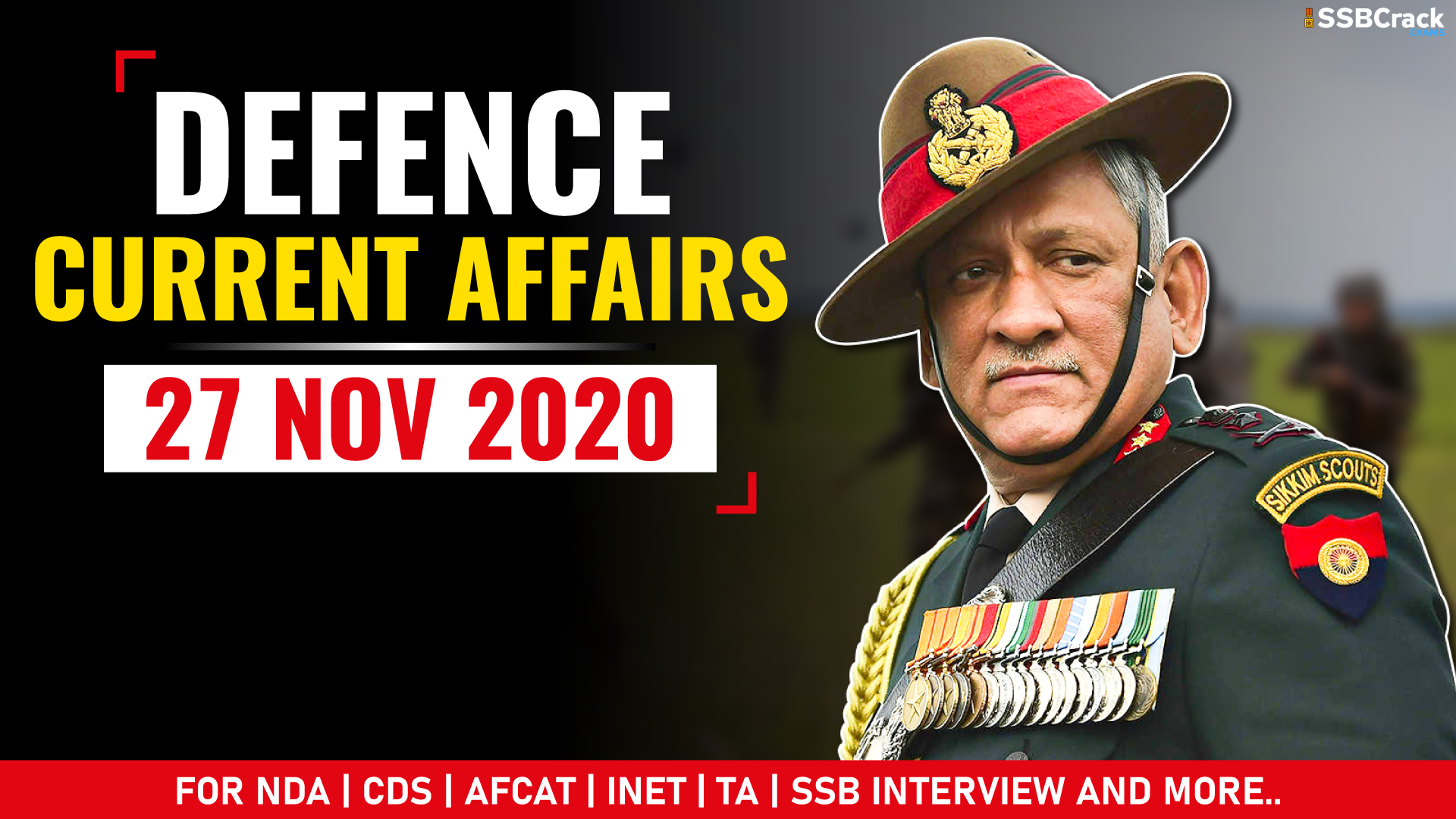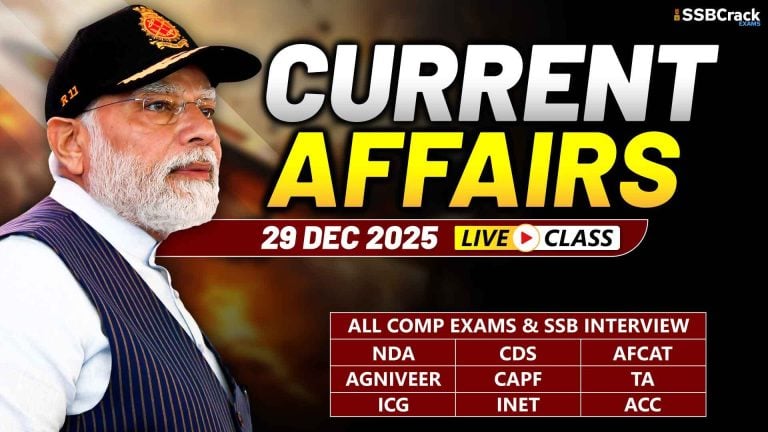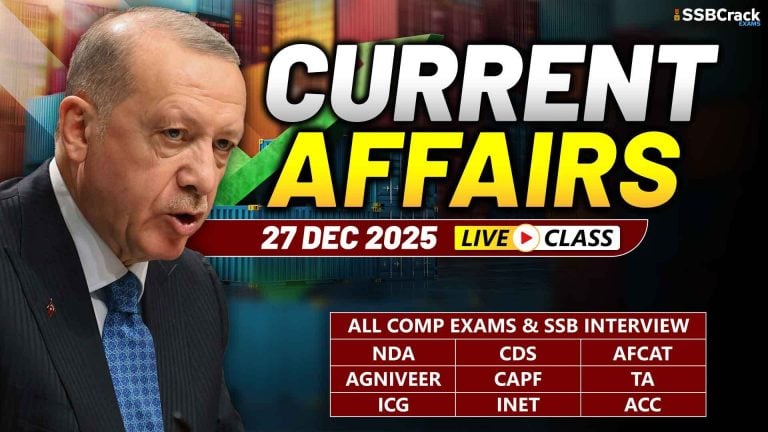Indian Army to get Drones from Israel and America for Surveillance along China Border
- In a major boost to its capabilities, the Indian Army is soon going to get Israeli Heron and American Mini Drones for upgrading its surveillance capabilities in Eastern Ladakh and other areas along the China border.
- “The deals for the acquisition of the Heron surveillance drones is in the final stages and is expected to be inked in December.
- The Herons are going to be deployed in the Ladakh sector and they will be more advanced than the existing fleet in the Indian armed forces,” government sources.
- The acquisition of these drones is being done under the emergency financial powers granted by Prime Minister Narendra Modi-led government to the defence forces under which they can buy equipment and systems worth Rs 500 crores to upgrade their warfighting capabilities, amid ongoing border conflict with China, they added.
- According to sources, the other small or mini drones are being acquired from the US that will be provided at the Battalion level to the troops on ground and the hand-operated drones would be used to attain awareness about a specific location or area in their respective areas of responsibility.
- The Indian defence forces have been taking these initiatives to acquire weapon systems which can help them in the ongoing conflict with China. The last time such a facility was given to the defence forces was in 2019 right after the Balakot air strikes against terrorist camps in Pakistan.
- Using the same facility, the Indian Navy has leased two Predator drones which have been taken from American firm General Atomics.
- The Indian Air Force had exercised the same powers to acquire a large number of Hammer air to ground standoff missiles with a strike range of around 70 kilometres.
Extended Neighbourhood: India, Bahrain Seek to Build Defence and Maritime Security Partnership
- External Affairs Minister S. Jaishankar called on who’s who of Bahrain‘s decision making process — Prince Salman bin Hamad Al Khalifa, the Crown Prince, Deputy Supreme Commander and Prime Minister, Shaikh Ali bin Khalifa Al Khalifa, Deputy Prime Minister and held talks with his counterpart Dr. Abdullatif bin Rashid Al Zayani, eyeing to elevate bilateral partnership in the strategic region.
- The two sides have decided to further strengthen the India-Bahrain ties including in areas of defence and maritime security, space technology, trade and investment, infrastructure, IT, FinTech, health, hydrocarbon and renewable energy.
- During his calls on the leadership, he personally conveyed sincere condolences on the sad demise of Prince Khalifa bin Salman Al Khalifa, former Prime Minister of Kingdom of Bahrain. He recalled the contribution of the late Prime Minister in strengthening India-Bahrain relations and for the welfare of the Indian community in Bahrain.
- He thanked the leadership of Bahrain for hosting more than 300,000 strong Indian community in Bahrain and for taking exceptional care of the community during the Covid-19 pandemic. Bahrain’s leadership appreciated the contribution of the Indian community to the development of Bahrain and the assistance provided by India during the Covid pandemic through supply of medicines, medical equipment and medical professionals.
- Both sides affirmed to further strengthen their Covid-related cooperation. They also expressed satisfaction on operationalisation of Air Bubble arrangement between the two countries.
- Jaishankar held delegation level talks with Bahrain’s Foreign Minister. The two Ministers discussed the entire gamut of bilateral issues as well as regional and global issues of mutual interest including cooperation and coordination in dealing with post-Covid challenges.
- During the visit, Jaishankar also interacted with the leaders of the Indian community in Bahrain in virtual mode. He paid a visit to 200 years old Shreenathji (Shree Krishna) temple in Manama. The temple and the Little India around it stand as a testimony for the enduring India-Bahrain friendship. He also visited National Museum of Bahrain.
Passing Out Parade to be held at Indian Naval Academy on 28 November 2020
- Indian Naval Academy (INA), Ezhimala will hold its Passing out Parade (POP) for Autumn Term 2020 on Saturday, 28 November 2020.
- The POP will be conducted without the presence of parents and guests of trainees, considering the precautions to be followed during COVID-19 crisis.
- Trainees comprising Midshipmen of 99th Indian Naval Academy Course (B.Tech and MSc) and Cadets of 30th Naval Orientation Course (Extended) will pass out as Officers on successful completion of their ab-initio training.
- Two trainees of the Sri Lanka Navy will also pass out this term.
- Trainees of Indian Naval Academy’s four years B.Tech degree course will be awarded their degrees by Vice Admiral M A Hampiholi, AVSM, NM, Commandant, INA during the convocation ceremony on 27 November 2020. The passing out courses were administered the Oath of Allegiance by Rear Admiral Tarun Sobti, VSM, Deputy Commandant and Chief Instructor, INA on 25 November 2020.
- To commemorate the sacrifices of the brave soldiers of the country, a Wreath Laying Ceremony was conducted at the War Memorial “Prerna Sthal” of INA on 25 November 2020.
- A spectacular outdoor training demonstration on 26 November 2020 by the trainees and INA band shall also add to the grandeur of the events conducted during this period.
- General Manoj Mukund Naravane, PVSM, AVSM, SM, VSM, ADC, Chief of the Army Staff will be the Reviewing Officer for the Passing Out Parade on 28 Nov 20.
Indian Navy Completes Refit of Maldivian Ship CGS Huravee
- Naval Dockyard, Visakhapatnam completed the refit of Maldivian Coast Guard Ship MNDF CGS Huravee. Rear Admiral Sreekumar Nair, Admiral Superintendent handed over the ship to the Commanding Officer Major Hussain Rasheed at Visakhapatnam on Wednesday, 25 Nov 20.
- Colonel Ahmed Thohir, Defence Advisor of Maldives to India, attended the ceremony wherein he conveyed the satisfaction of the Maldives Government and also read a message from the Minister of Defence, Govt. of Maldives on the excellent conduct of refit amidst the pandemic and thanked the Govt. of India, Indian Navy and HQENC for smooth and safe completion of the refit.
- The ship arrived in Visakhapatnam for its refit on 22 Feb 20. Notwithstanding the limitations imposed due to COVID19 pandemic since March 20, dedicated efforts and careful planning & execution of works by Naval Dockyard with adequate safety enabled major refurbishment/replacement of main propulsion and auxiliary equipment. Renewal of ship’s power generation equipment has provided a major fillip to the ship’s endurance and capability. Further, several systems and equipment were overhauled successfully to ensure better performance and sustainability of the ship for service with the Maldives Coast Guard during the upcoming operational cycle. The ship was put through extensive harbour and sea trials, to achieve full operational readiness.
- MNDF CGS Huravee (originally INS Tillanchang) is an indigenously built Trinkat class patrol vessel constructed at Garden Reach Shipbuilders and Engineers, Kolkata in 2001. Subsequently, it was gifted to Maldives by the Government of India in 2006 to strengthen the partnership between the two nations and to cooperate further for the maritime safety of the Indian Ocean Region.
- Rear Admiral Sreekumar Nair, Admiral Superintendent of Naval Dockyard, Visakhapatnam was the Chief Guest and addressed the gathering on the occasion. He highlighted the stringent measures incorporated during the refit to ensure that the crew and the Yard workforce remained free from COVID19 infection whilst meeting the refit targets.
Indian Fabric to Replace Chinese, Foreign Clothing for Making Military Uniforms
- Defence Research and Development Organisation (DRDO) is helping Indian textile industries produce yarns to end the reliance on imports of Chinese and other foreign clothing for making military uniforms.
- Director of Directorate of Industry Interface and Technology management (DIITM) at DRDO, Dr Mayank Dwivedi said that for Indian army’s summer uniform alone, the approximate requirement of the fabric is 55 lakh metres and if all the requirements of Navy, Air Force and Para Military forces are added then the requirement may go well beyond 1.5 crore metres per annum.
- “We’re following our Prime Minister Narendra Modi’s call for Atmanirbhar Bharat or self-reliance in all the products in India and particularly in defence products. If these yarns and fabric are manufactured in India for the purpose of uniform making for the armed forces, then it will be big achievement as it will help us move one step ahead towards Atmanirbhar Bharat,” Dr Mayank Dwivedi told ANI.
- The advanced fabrics can be used for future requirement of the parachute and bulletproof jackets as well.
- The DIITM Director further said that the scope of technical textiles such as glass fabric, carbon fabric, aramid fabric and advanced ceramic fabrics is enormous in defence application. Some industries in Ahmedabad and Surat are manufacturing advanced fabrics being used in defence applications.
- In a recent digital interaction organised by Confederation of Indian Industries (CII) with the industries of Surat on September 17, the challenges faced by the textile industry were projected. During the interaction, Dr Dwivedi had talked about opportunities in the areas of textile in the defence sector. He expressed his views on various possibilities of advance textile material and fabric used in the Indian Armed Forces.
- “We are working to make technical textile for rocket motors and composite structure for the missile system. We are using technical textile in bullet-proof jackets as well. Similarly, I shared the idea of making blends like nylon 6,6 yarn, lycra fibre, viscose, polyester to make army uniforms at the CII webinar in the Surat industry recently. For a particular requirement of the Indian armed forces, the uniform can be made in a much better way,” Dr Dwivedi told.
- The major application of advanced textile is required in the uniform worn by the Indian Armed Forces as well as all their accessories such as bags, shoes and tents which are used by the Forces.
- It was emphasised that the use of advanced textiles blends using yarns of polyester/ nylon 6,6 / cotton/polyurethane/rayon will enhance operational capabilities and comfort of Indian Armed Forces.
- Pointing towards the initiative and the participation of Indian companies, he said, “In the webinar, more than 200 companies were interested in getting into this business. Bindal Silk Pvt Ltd, Lakshmipati Group among a few others were present and wanted to take up this initiative. This will not only boost the economy of the country but also generate lots of employment and eventually give a boost to the GDP also.”
Turkish firm develops AI-powered software for drone swarms
- MilSOFT announced Nov. 19 it developed the software after four years of research, and the the technology could be used in both fixed- and rotary-wing drone platforms.
- A government aerospace official said swarm drones would be used in Turkey’s future unmanned aerial combat concept due to their low hardware costs and stealth technology.
- “These drones could be ideal in asymmetrical warfare. They are quick, cost-effective and easy to operate,” the official said. “Most importantly, they are assets designed to minimize human loss in asymmetrical warfare.”
- The Turkish military has been operating a big fleet of tactical and armed drones primarily in combat against Kurdish militants in Turkey’s southeast provinces but also in cross-border operations in northern Syria and Iraq. Turkish drones have also been used in Libya’s civil war and, most recently, in conflict between Armenia and Azerbaijan.
- Many countries have yet to try drone swarm technology in a simulated, controlled environment. Turkey is among those that have the technology and the ability to test it in the field during operations.
- Turkey’s top procurement office, the Presidency for Defense Industries, launched its Swarm UAV Technology Development and Demonstration program with a view to develop algorithms and software for the use of unmanned platforms with a swarm capability. The program is also meant to involve micro-scale companies as well as small and medium-sized enterprises.
- MilSOFT has specialized in software solutions since 1998, and it is one of the participants of the government-run program. It has been offering products to the Turkish military for tasks including identifying detection by automatic moving target technology using AI, and machine-learning techniques with image-processing algorithms.
- The company said with the integration of intelligence and image evaluation products, drone swarms can be updated with additional capabilities such as reconnaissance, detection, recognition, search and rescue, and vehicle tracking.
- MilSOFT’s software-based solution will allow drone swarms to be launched from aerial, land and naval platforms, and the images they obtain will enter a central command system. In the meantime, the drone flocks will transfer images between different military units with a relay function.
- AI technology can help catch elements that cannot be caught by the human eye and enable multiple attack capabilities by arming vehicles in operation.
- MilSOFT’s AI-based software is also expected to enable swarm drones to perform frontal attacks on command from helicopters and provide operational support to other friendly platforms. The drones can reportedly operate autonomously from the beginning to the end of a mission, and can be instantly monitored and controlled via intelligence applications.
- The UAVs have a flight time of more than half an hour and a payload capacity of 1 kilogram (2.2 pounds). The vehicles work with landing gear that can land on rough terrain.
- While five UAVs are currently used in a herd in the field, this number can reach up to 25 in a controlled environment. MilSOFT aims to make a drone swarm of 50 operational vehicles.
- Communication between the drones is also provided by MilSOFT’s own technology. Vehicles can communicate with each other from up to 500 meters. There is also a 10-kilometer network solution for data transfers.
- MilSOFT plans to integrate its technology for underwater and surface platforms as well as land vehicles.
Defence Organisations Celebrate Constitution Day
- DRDO, Indian Army, Indian Navy, Indian Air Force and various central organisations of the country celebrated Constitution Day on 26th November by carrying out a reading of the Preamble and the Fundamental Duties enshrined in the Constitution for all serving and civilian personnel.
QUICK REVIEW
- Indian Army has recently said that it is going to get drones from which two nations for Surveillance along China Border?
- US and Russia
- Israel and Russia
- US and Israel
- US and France
ANSWER: C
- Indian Navy, on 25th November 2020, had completed the refit of CGS Huravee. This ship belongs to
- Mauritius C. Maldives
- Malaysia D. Morocco
ANSWER: C
- CGS Huravee was formerly which Indian Ship which is actually gifted to Maldives by India?
- INS Tillanchang
- INS Sindhuraj
- INS Sindhudhwaj
- INS Veer
ANSWER: A
- Which Directorate of DRDO is helping Indian textile industries produce yarns to make Chinese & Foreign clothing for Indian Uniforms?
- Directorate of Defence Production (DDP)
- Directorate of Civil Works and Estates (DCW&E)
- Directorate of Finance and Materials Management (DFMM)
- Directorate of Industry Interface & Technology management (DIITM)
ANSWER: D
- The largest installed solar project till date for Leh region was installed at AFS Leh under guidelines set by which Union Ministry?
- Union Ministry of Home Affairs
- Union Ministry of Science and Technology
- Union Ministry of New and Renewable Energy
- Union Ministry of Defence
ANSWER: C
- MilSOFT, the private company that developed AI-powered software for drone swarms, belongs to which country?
- Bahrain
- Turkey
- Armenia
- Azerbaijan
ANSWER: B

















